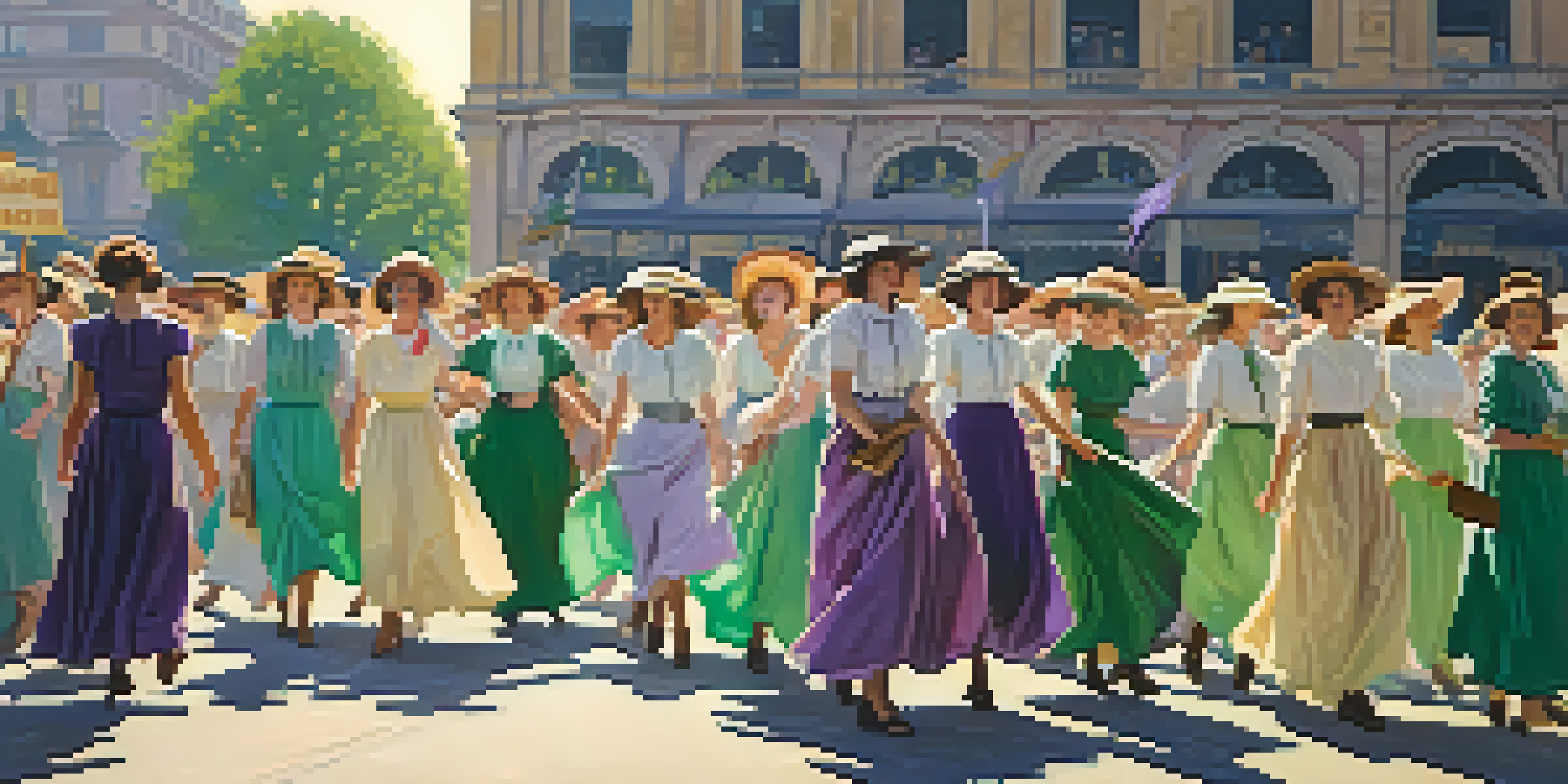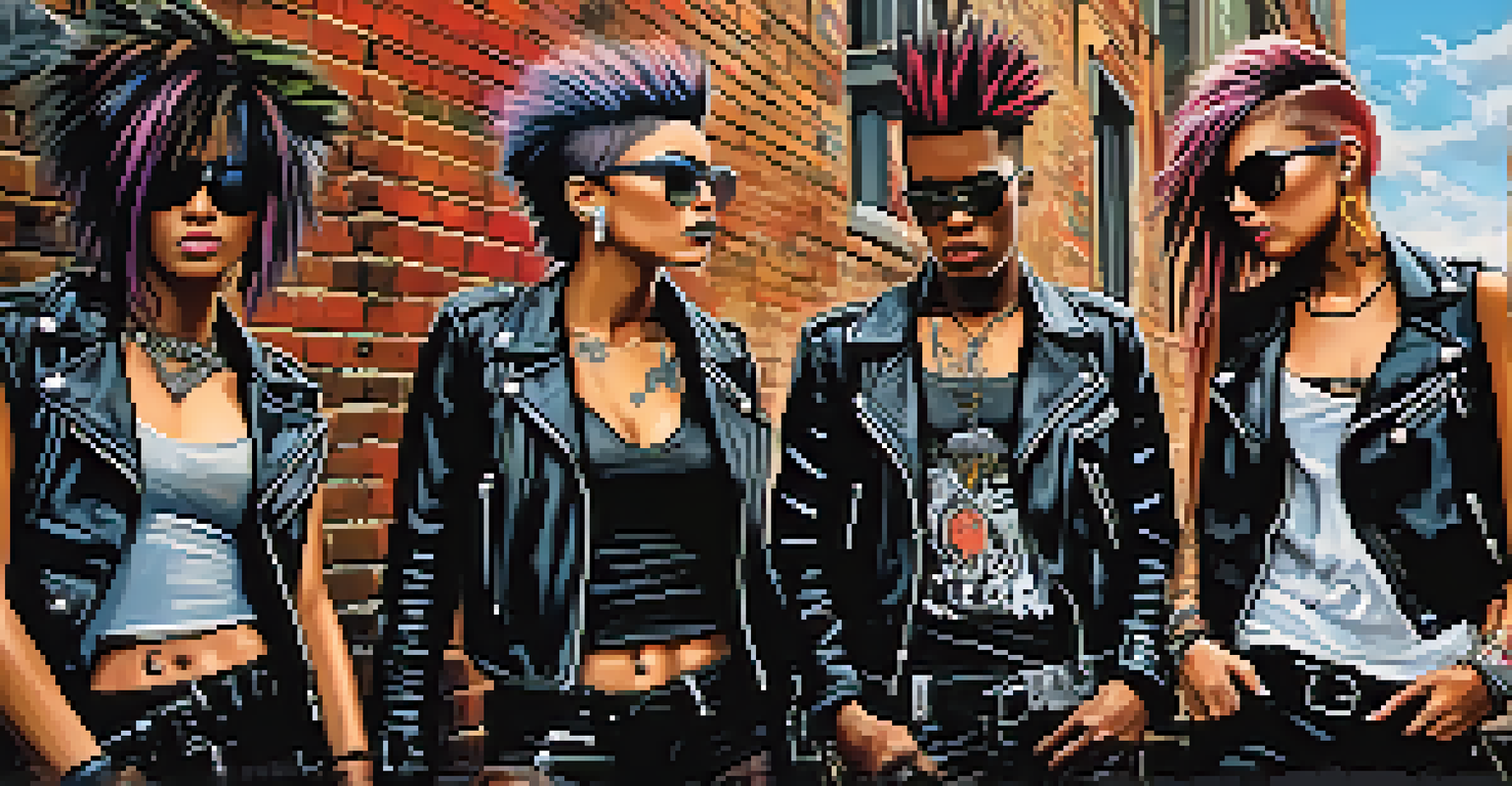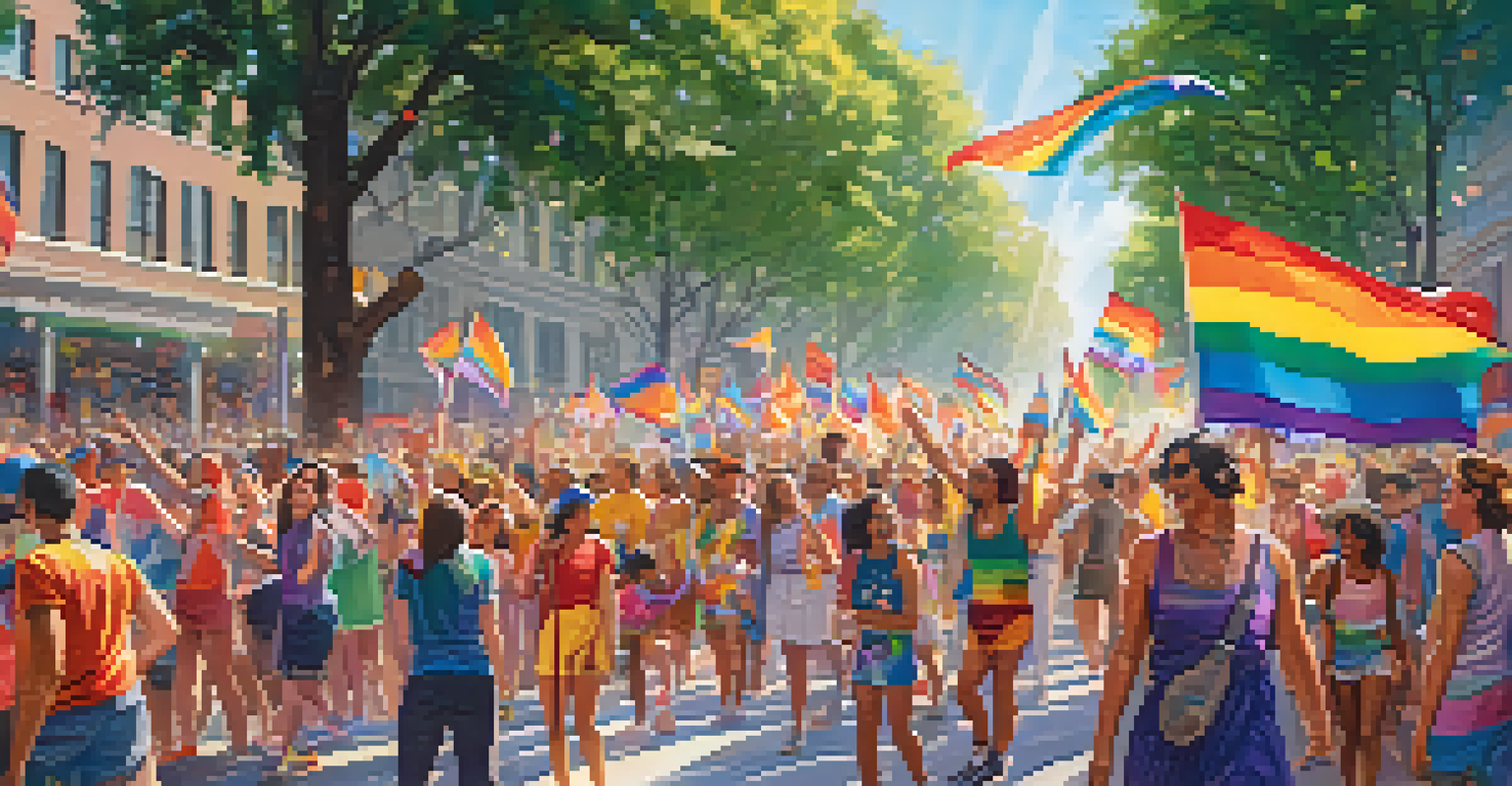Fashion as a Form of Protest: Historical Perspectives

Understanding Fashion as a Form of Protest
Fashion is often seen as a reflection of personal style, but it can also serve as a powerful means of protest. Throughout history, clothing choices have been used to challenge societal norms, express dissent, and advocate for change. This intersection of style and activism is a fascinating lens through which we can examine cultural shifts and political movements.
Clothes make the man. Naked people have little or no influence on society.
For example, the suffragette movement in the early 20th century utilized fashion to signal their struggle for women's rights. Women wore white dresses as a symbol of purity while demanding their right to vote. This choice of clothing not only embodied their cause but also challenged the traditional roles assigned to women in society.
As we delve deeper into the historical perspectives of fashion as protest, we can see how garments have transformed from mere fabric to powerful symbols of resistance across various movements. Understanding this evolution gives us insight into the broader implications of our clothing choices today.
The Suffragettes: Fashion as Empowerment
The suffragette movement is a prime example of how fashion can empower and mobilize a group. Women involved in this movement adopted specific styles that reflected their determination and resilience. Their choice of white, purple, and green, for instance, carried significant meaning, representing purity, dignity, and hope.

By wearing these colors and adopting a more masculine style of dress, suffragettes were making a bold statement against the restrictive fashion norms of their time. They were not just fighting for the right to vote; they were also challenging the very notion of femininity as defined by society.
Fashion as a Tool for Protest
Throughout history, fashion has been utilized as a powerful means of protest, challenging societal norms and advocating for change.
This strategic use of fashion helped to unify the movement and garnered attention from the media, further amplifying their message. The suffragettes remind us that clothing can be a form of visual rhetoric, communicating powerful messages without uttering a single word.
Civil Rights Movement: Clothing as a Statement
During the Civil Rights Movement of the 1950s and 1960s, clothing became an essential tool for social change. Activists used fashion to convey their messages of equality and justice. The iconic image of Martin Luther King Jr. in a suit at the March on Washington exemplifies how attire can symbolize dignity and respect.
Fashion is the armor to survive the reality of everyday life.
Clothing choices also played a role in everyday protests, such as the sit-ins at segregated lunch counters. Participants wore their Sunday best to signify their demand for equality and to counter the stereotype that African Americans were unrefined or disrespectful.
The fashion of the Civil Rights Movement was not only about resistance; it was also about reclaiming identity. By dressing with intention, activists asserted their place in society and challenged the systemic oppression they faced.
The Punk Movement: Rebellion Through Style
The punk movement of the 1970s is perhaps one of the most vivid examples of fashion as protest. Punk fashion was a radical departure from mainstream styles, characterized by torn clothing, leather jackets, and DIY accessories. This aesthetic was a deliberate rejection of societal norms and a form of rebellion against authority.
Punk fashion also served as a canvas for political expression, with slogans and symbols that critiqued the establishment. Bands like the Sex Pistols used their clothing to provoke thought and inspire action, encouraging youth to question the status quo.
Empowerment Through Clothing Choices
Movements like the suffragettes and Civil Rights activists demonstrated how intentional clothing choices can symbolize dignity, identity, and resistance.
Through this lens, we see how fashion can encapsulate a broader cultural movement. Punk not only influenced music but also became a symbol of youth defiance, proving that what we wear can communicate our beliefs and values loud and clear.
LGBTQ+ Rights: Colorful Expressions of Identity
The LGBTQ+ rights movement has utilized fashion as a vibrant form of protest and celebration. The rainbow flag, a symbol of diversity and inclusion, has become an emblem of pride, showcasing the spectrum of identities within the community. Wearing rainbow colors during Pride events is a powerful way to assert one's identity and advocate for equality.
Additionally, fashion choices within the LGBTQ+ community often challenge traditional gender norms. Designers and activists alike use clothing to express fluidity and break down barriers, showing that identity is not confined to societal expectations.
This movement illustrates how fashion can foster community and solidarity. By wearing specific styles or colors, individuals signal their support for LGBTQ+ rights and create safe spaces for expression and acceptance.
Modern Fashion Activism: The Rise of Ethical Choices
In recent years, modern fashion activism has taken on new forms, focusing on ethical consumption and sustainability. Movements like 'slow fashion' encourage consumers to choose quality over quantity, promoting environmentally friendly practices. This shift is a response to the fast fashion industry, which often exploits labor and harms the planet.
Brands are also using their platforms to advocate for social justice, employing fashion as a means of raising awareness about issues such as climate change, workers' rights, and racial equality. Collaborations with activists and communities highlight how fashion can create meaningful change.
Modern Activism and Ethical Fashion
Today, fashion activism emphasizes ethical consumption and sustainability, encouraging consumers to make choices that reflect their values and support social justice.
This contemporary approach to fashion as protest reflects the growing awareness of our impact on the world. By making conscious choices, we can use our clothing to stand in solidarity with various movements, proving that fashion continues to be a powerful tool for change.
The Future of Fashion as Protest: A Call to Action
As we look to the future, the role of fashion in activism is likely to evolve even further. With the rise of social media, individuals can now amplify their messages and connect with like-minded communities worldwide. This digital landscape allows for new forms of protest that blend fashion with technology.
Moreover, as awareness of intersectionality grows, the fashion industry is being called to account for its role in perpetuating inequalities. Activists advocate for inclusivity, diversity, and ethical practices, pushing brands to reflect the values of the movements they claim to support.

The future of fashion as protest is not just about making statements; it's about creating a collective movement that inspires change. As consumers, we have the power to influence the industry and ensure that our clothing choices align with our values, making fashion a catalyst for progress.